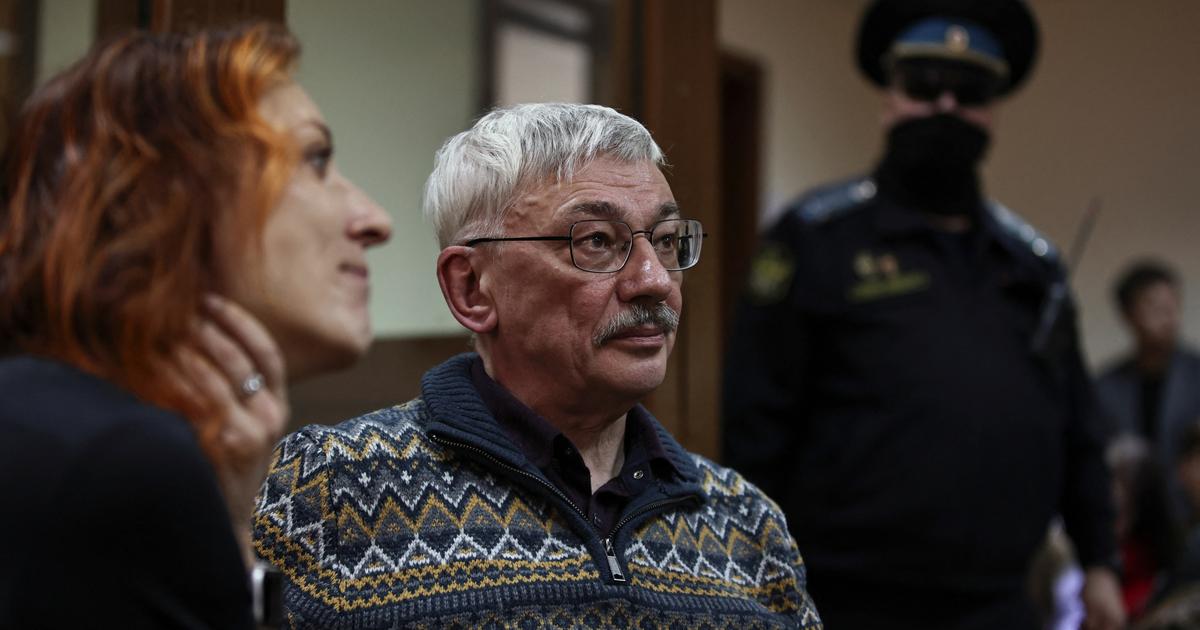Relatives were reunited at the Lviv station on July 27.David Goldman (AP)
The scene of the dream is as follows: a young woman is sitting in her room when some kind of small creature enters, perhaps a fairy, perhaps a gnome.
This creature looks at her and stands on top of a window, on the frame.
The young woman wakes up and feels that the puny being that was staring at her was somehow representing death.
This is one of the dream stories that the researcher Bohdan Shumilovich has gathered as part of the war documentation project carried out by the Center for Urban History in the city of Lviv, in western Ukraine.
"Sometimes dreams can prove things that documents can't," says Shumilovich, 45.
Show emotions or feelings that should be part of the history of this war beyond the bombs, the deaths and the flight.
But before dreams knocked on the door of this research center, dozens of Ukrainian citizens who fled from the east of the country to take shelter in Lviv, a key city on the journey to the western border.
Since Russia began the invasion on February 24, this independent institution, located in an impeccable
art nouveau
building in the center of the city, has welcomed more than 300 people.
Five months later, the sirens continue to sound in the streets – although the shelters are not very full – but many Ukrainians displaced by the violence have already returned to their homes.
That is if they still existed.
The Center for Urban History maintains 11 people overnight in its old conference room.
More information
Follow the last hour of the war in Ukraine
"First we asked ourselves what we could do as human beings and we housed people," says Mariana Mazurak, 32, deputy director of the center, "then we thought about how to contribute as an institution and we started the documentation process."
They began collecting testimonies, interviewing Ukrainian citizens, archiving photos from individuals, professional photographers and even from social networks, with Telegram in the lead.
They already have more than 27,000 stored images and 130 personal stories through questionnaires that they even repeat to save the emotions of the first answers, the ones that come out hot.
Some of the collected photographs simply show snapshots of ordinary life around the war;
Others travel to the interior of humble shelters, to those days when Azovstal resisted, in Mariupol, to the streets full of Molotov
cocktails
prepared by the resistance, to the destruction of bombs or even to the bodies annihilated by the war that save the files.
"We don't know yet how to show these images with corpses, but we will," says Mazurak.
The objective of all this effort is to make the material public, either for research, journalism or even to serve justice.
The Center for Urban History of Lviv, founded by the Austrian Harald Binder, is just one of many efforts to document the war in Ukraine, a unique case study for the amount of audiovisual material it produces, the exceptional contribution of social networks, the massive arrival of journalists and access to hundreds of thousands of displaced people, with their experiences behind them.
At the top of these efforts is undoubtedly the International Criminal Court based in The Hague, which investigates war crimes with the commitment of more than 40 countries to coordinate their investigations.
But there are also smaller national initiatives, such as the 5 am Coalition — five in the morning, the time the Russian invasion began — which brings together some thirty Ukrainian human rights organizations.
Tom Artem, a 27-year-old Ukrainian, has contributed his photos to the under-construction macro-archive of the Lviv Center for Urban History.
He is one of those 11 displaced by the war who still live in this building.
From Kherson, in the southeast of the country, he fled in February with his brothers to Odessa, on the Black Sea coast.
In March, the young man, this time alone, ended up in Lviv.
Two weeks have already passed, according to him tremendously nervous, since the last time he spoke with his parents.
His brothers tell him that they are hiding somewhere in Kherson, now occupied by the Russian military.
"How do you feel?"
“Angry, empty.
That's just the kind of academically ill-advised question, Bohdan Shumilovich admits.
“If you want to document”, he explains, “you don't have to look for an emotional reflection”.
Shumilovich, a professor at Lviv University, did not want to act as a therapist.
Other colleagues from the academic world suggested that he choose to gather a kind of diaries that could be part of history.
And that is what he asked the students of him.
"I told them to write about their daily lives, the changes around them, what they read in the media or networks," continues the historian.
The story of the war, after all, is not only written by the direct victims of violence, but by all those who suffer it, whether from a relatively safe place like Lviv.
At first 50 signed up for the initiative, then 70,
but little by little they became discouraged;
They didn't know what else to tell.
That's when the dream story entered the scene.
Shumilovich recalled the book published by the German journalist Charlotte Beradt in the 1960s under the title
The Third Reich of Dreams
.
In it, Beradt, with the help of the writer Hannah Arendt, collected more than 300 dreams of Jewish citizens under the Nazi regime.
"They are not an exact source for documentation," says the Ukrainian researcher, "but they are evidence."
A different piece of evidence, but one that can form part of the history of the war beyond the conquests or defeats of the army.
The young people share with Shumilovich dreams that they write by hand, on their computers, that they record and interpret.
The idea is to collect diaries and dreams, translate them into English and show them to the world through the Internet.
There goes another dream: a young man is sitting in a room with a cat, under a glass ceiling.
Above, a species of flying rats wait threateningly.
The scene has an almost cinematographic aesthetic, according to the story.
Suddenly, the rats attack very violently.
Follow all the international information on
and
, or in
our weekly newsletter
.
50% off
Subscribe to continue reading
read without limits
Keep reading
I'm already a subscriber

/cloudfront-eu-central-1.images.arcpublishing.com/prisa/AWWAT2YDE63ODSCNA25J4VTECY.jpg)







